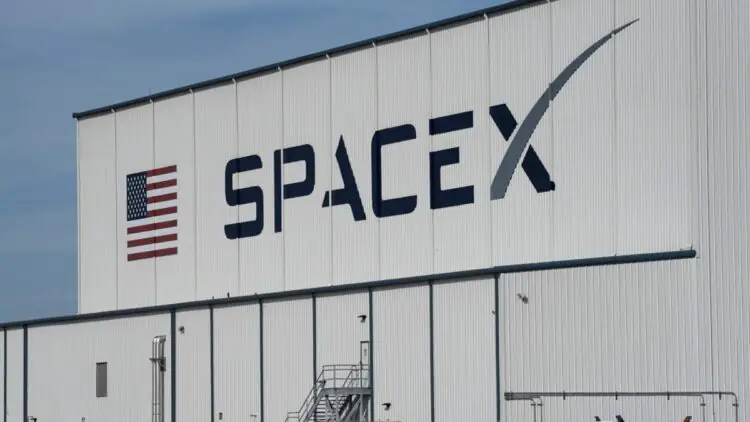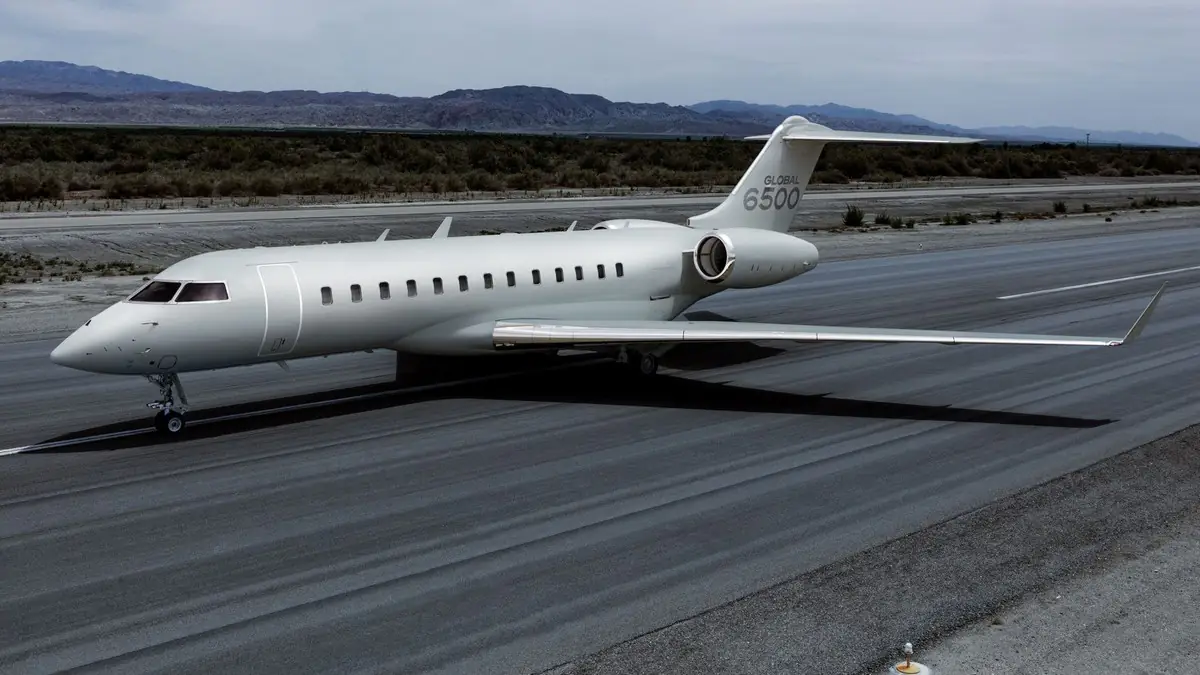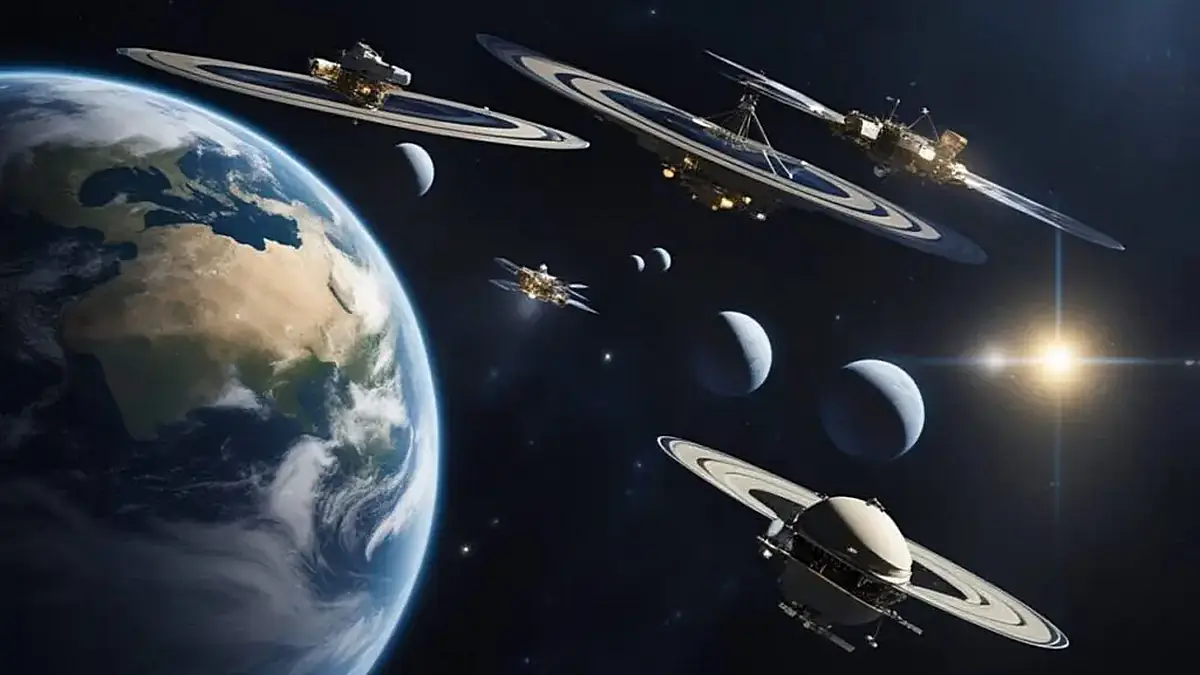From Eccentric to Space Revolution Pioneer – it seems nothing can stop Elon Musk. SpaceX has long outgrown its status as just another aerospace company. Musk’s journey typically begins with skepticism, setbacks, and doubt, but more often than not, it leads to breakthroughs. And SpaceX is one of the most prominent examples of that trajectory.
Despite the turbulence and challenges of recent years, the project deserves recognition not only for the crises it has weathered but for the achievements that are reshaping the future of humanity. Among them is SpaceX’s bold, uncompromising goal: sending people into space, ferrying astronauts to the International Space Station, and eventually landing humans on Mars. Not long ago, these ambitions sounded like science fiction – today, they’re edging into the realm of possibility.
Sure, some might say, “What’s the big deal? Astronauts have been traveling to space for decades.” But there’s an important distinction here. SpaceX is a private company – not a government agency with an unlimited budget, but a commercial venture that’s effectively ushering in a new era of space exploration. This is no longer just a geopolitical race between nations – it’s a new frontier where innovation, speed, and risk move hand in hand.
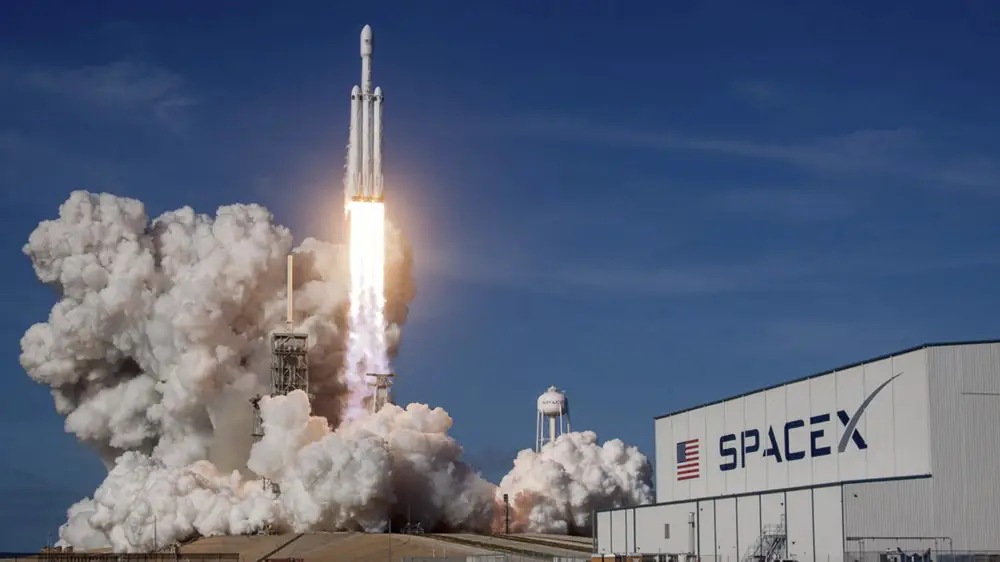
Today, the space industry is no longer defined solely by NASA, ESA, or JAXA. Private players like SpaceX have entered the scene, making missions more cost-effective, accelerating launch timelines, and – perhaps most importantly – bringing fresh, unconventional thinking. Musk’s rockets have already flown successful missions for both NASA and JAXA, proving that a new era has indeed begun.
And this is just the beginning. Ahead lie ambitious transportation programs, autonomous cargo ships, fully reusable rockets, and eventually – space tourism. SpaceX isn’t just reaching orbit – it’s redefining the rules of spaceflight.
Read also: Thrust Reversal: How and When an Aircraft Uses Engine Braking
TABLE OF CONTENT:
SpaceX’s origins
SpaceX isn’t the only private company in the modern space race – but it’s undeniably the most recognized and arguably the boldest. It’s pushed the farthest, and in doing so, has become a symbol of what private enterprise can achieve in space. All of this stems from one persistent vision that took root in Elon Musk’s mind well before 2002, the year SpaceX was officially founded.
The South African-born entrepreneur, known for his audacious ideas and even greater resilience, has proven that dreams – when backed by determination and engineering grit – can become reality. Musk’s brother, Kimbal, once described him as “a man of boundless ambition,” adding, “His mind needs challenges. Simple things don’t interest him. He always has to wrestle with something big.” And that’s exactly how Elon Musk has lived – diving headfirst into projects most others dismissed as science fiction.
Before rockets, interplanetary missions, and flamethrowers, there was Zip2 – Elon Musk’s first venture. It was an online city guide with integrated maps, which he sold to Compaq in 1999 for around $300 million. Next came X.com, a cutting-edge online payment platform for its time, which would later evolve into the PayPal we know today. In 2002, eBay acquired it for $1.5 billion. Musk’s share of the sale came to roughly $160 million – funds that would go on to fuel his next ambitious project: Space Exploration Technologies, better known simply as SpaceX.
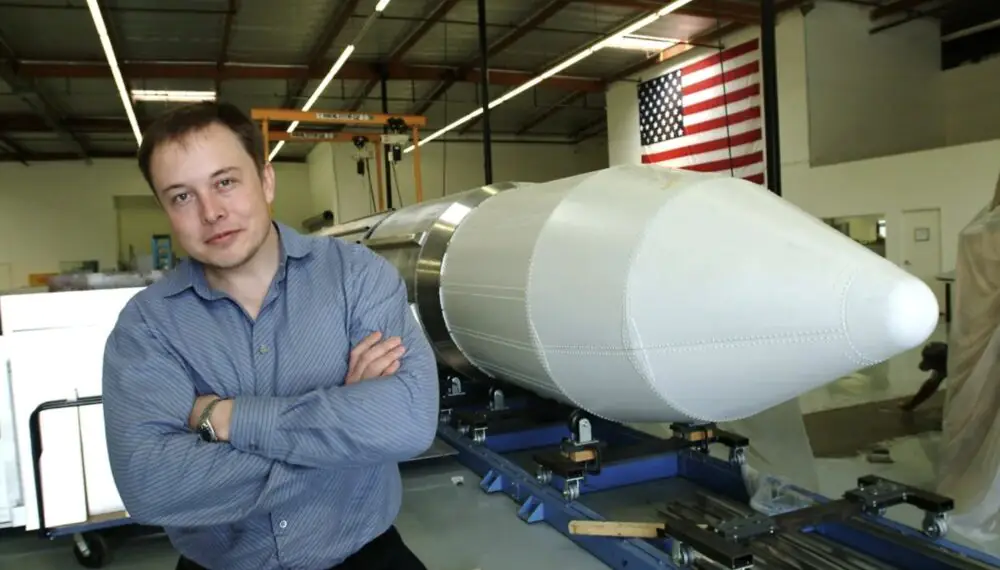
Musk has openly admitted that starting SpaceX was a high-stakes gamble. “I didn’t even let friends invest – I was convinced they’d lose everything. I’d rather go broke myself,” he said at a 2018 conference. But instead of bankruptcy, what emerged was a rocket that not only reached the sky but earned its place in history.
SpaceX is more than just a company. It’s proof that passion, persistence, and a touch of madness can push space exploration forward in ways few thought possible.
Read also: Can the U.S. Plant Its Flag on Mars?
The beginning was not easy
The early years of SpaceX were marked by setbacks and growing pains. The company faced serious engineering challenges, tight finances, and bureaucratic roadblocks. Its first office was a modest warehouse in El Segundo, California, where a small team began developing the company’s initial rocket designs. Elon Musk took on the role of lead engineer himself, and at the time, SpaceX had no more than a dozen employees. In those formative stages, everything was funded entirely out of Musk’s own pocket.
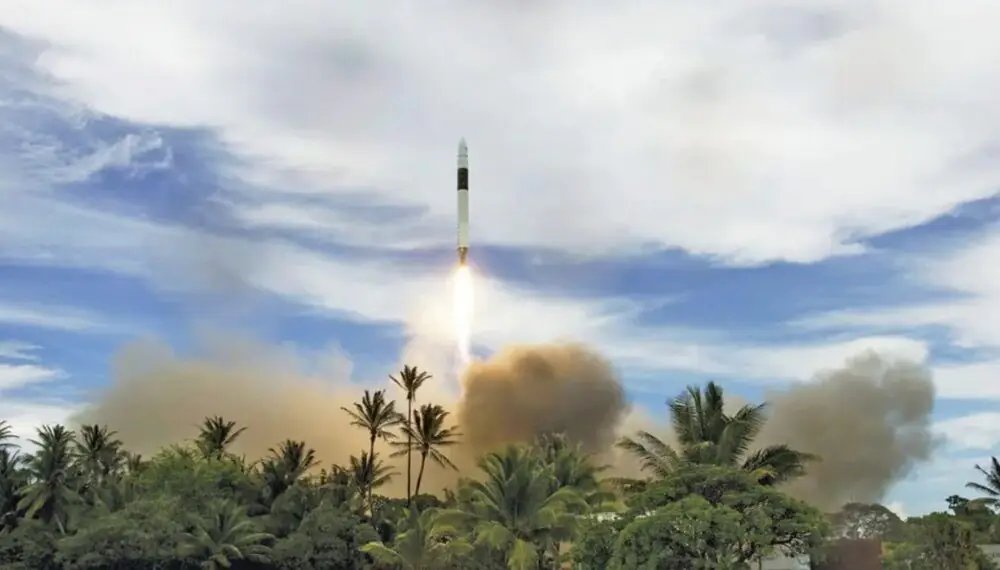
Falcon 1, SpaceX’s first rocket, eventually made history – but not without repeated failures. The company’s first three launches ended in disappointment. It wasn’t until the fourth attempt in 2008 that Falcon 1 successfully reached Earth orbit, becoming the first privately built liquid-fueled rocket to do so.
By that point, though, the company was hanging by a thread. Funds were depleting rapidly, with each failed launch burning through not just fuel, but the company’s remaining financial reserves. According to Musk, there was just enough money left for one final attempt. It was a make-or-break moment: either the rocket would fly, or it would be the end of SpaceX.
And then, just in time, a breakthrough came. Two days before Christmas in 2008, NASA announced it would award SpaceX a $1.6 billion contract under its Commercial Resupply Services program to deliver cargo to the International Space Station. The deal served as a lifeline. Musk later admitted that without NASA’s support, SpaceX likely wouldn’t have survived.
With renewed funding and a boost in confidence, development efforts ramped up again. One of Musk’s core ambitions came back into focus: building reusable rockets to drastically cut the cost of spaceflight.
In 2010, SpaceX made history again. Its Dragon 1 spacecraft became the first privately developed vehicle to successfully launch, reach orbit, and return safely to Earth. Although the mission ended with the loss of the capsule due to parachute failure, the flight proved that private companies could now achieve what was once possible only for national space agencies.
Read also: All About the Turkish UAV Bayraktar Kizilelma: Development History and Prospects
Return flights
Through a series of difficult trials and notable failures, SpaceX engineers refined the process of launching the future. Behind every test, setback, and explosion was a clear goal: to build a rocket capable not only of reaching space but also returning safely. That goal became a reality in 2015.
After deploying several satellites into orbit, the Falcon 9 began its descent. At a designated altitude, it reignited its engines, adjusted its orientation, and executed a controlled vertical landing with minimal damage. This achievement went beyond a technical milestone – it was a moment that signaled the increasing accessibility of space. Falcon 9 became the first orbital rocket in history to complete a successful vertical landing.
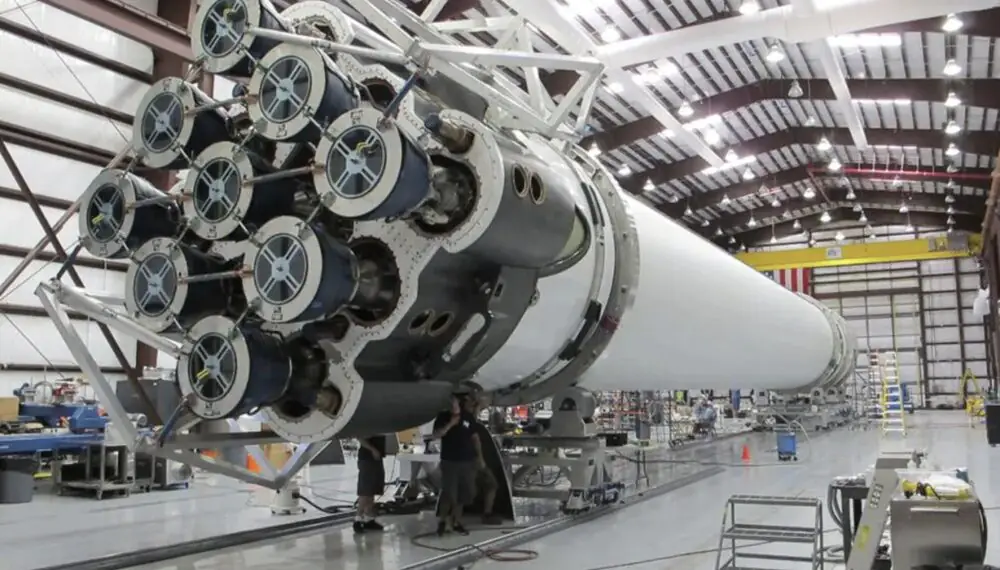
Before that, NASA, Roscosmos, and other agencies launched rockets that either burned up in the atmosphere or fell into the ocean after completing their missions. Each launch required building a new rocket – a process that was expensive, time-consuming, and inefficient. SpaceX demonstrated that there was a different way.
Falcon 9 changed the game. Since then, it has become the company’s workhorse, completing over 20 missions to the International Space Station, and this is just the beginning. Falcon 9 has also been used to launch GPS satellites, military equipment, telecommunications systems, and the global Starlink internet network. What sets it apart is that it doesn’t just fly – it returns. The same rocket can be reused multiple times, saving millions of dollars and years of preparation.
After the end of the Cold War, the global space landscape began to shift. New players emerged, including China, Japan, India, the UAE, and various European countries. Each year brought lunar missions, new Mars rovers, dozens of satellites, and an increasing number of private projects. In this context, SpaceX has taken a leading role by providing ready-made infrastructure that enables other countries, research institutions, and private companies to reach orbit without having to develop their own rockets from scratch.
SpaceX is not just building rockets; it is establishing a new model for space exploration – one that is open, fast, and flexible. This appears to be only the beginning.
Read also: Swift Beat’s Shahed Interceptor Drone: What We Know
Walking in space
While Falcon 9 was being developed to return safely to Earth, SpaceX engineers were simultaneously working on another ambitious project – the Dragon spacecraft. Designed to deliver cargo to the International Space Station and return valuable payloads, Dragon was conceived not just as a “cargo truck” for orbit but as a platform with future potential to carry people.
The first version introduced was the Cargo Dragon, which transported equipment, food, and tools. Alongside this, the crewed variant, Crew Dragon, was being developed to restore independent access to space for the United States.
In December 2010, Dragon completed its first flight as part of the COTS Demo Flight 1 mission. It completed two orbits around Earth and successfully returned. This was more than just a technical success – it signaled that SpaceX was now competing at the highest level.
In April 2011, NASA awarded the company $75 million under the Commercial Crew Development (CCDev) program to develop a launch escape system. Around the same time, SpaceX officially joined NASA’s Commercial Crew Program and later secured several significant contracts. The most notable was a 2016 contract worth $2.6 billion to transport American astronauts to the International Space Station.
At the beginning of 2012, SpaceX’s market value was estimated at $1.3 billion. By May of the same year, after Dragon became the first commercial spacecraft to deliver cargo to the International Space Station, the company’s valuation rose to $2.4 billion.
Within the Commercial Crew program, SpaceX completed development of Crew Dragon – a next-generation crewed spacecraft that restored the United States’ ability to launch astronauts independently following the retirement of the Space Shuttle. For the first time since 2011, American astronauts returned to space from U.S. soil – not on a government rocket, but on a private company’s vehicle that, just a few years earlier, many had considered an ambitious idea from Elon Musk.
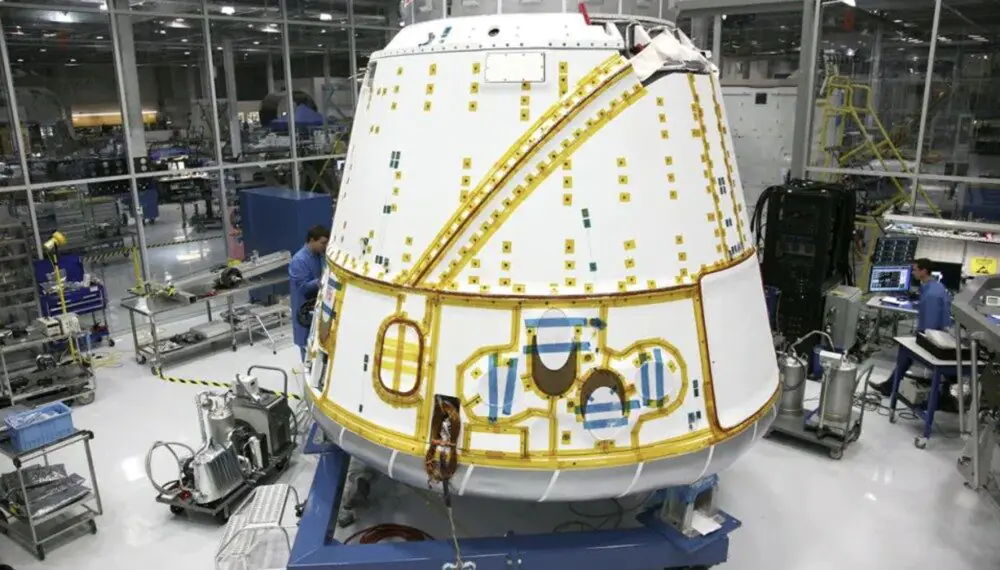
Through persistence, technical boldness, and strategic partnership with NASA, SpaceX transformed from an experimental startup into one of the most influential space companies in the world – all within a decade.
One of the company’s most significant milestones was its first crewed flight. Launching satellites or delivering cargo to orbit involves a high level of complexity, but when people are on board, the responsibility and stakes increase dramatically. At that moment, SpaceX took a major step forward – and did so with confidence.
In May 2020, the Crew Dragon spacecraft successfully transported two American astronauts – Robert Behnken and Douglas Hurley – to the International Space Station. This marked the first time since the Space Shuttle program ended that astronauts launched into space from U.S. soil. More than just a return to crewed launches, it signaled the beginning of a new era where a private company, rather than a government agency, handles human spaceflight.
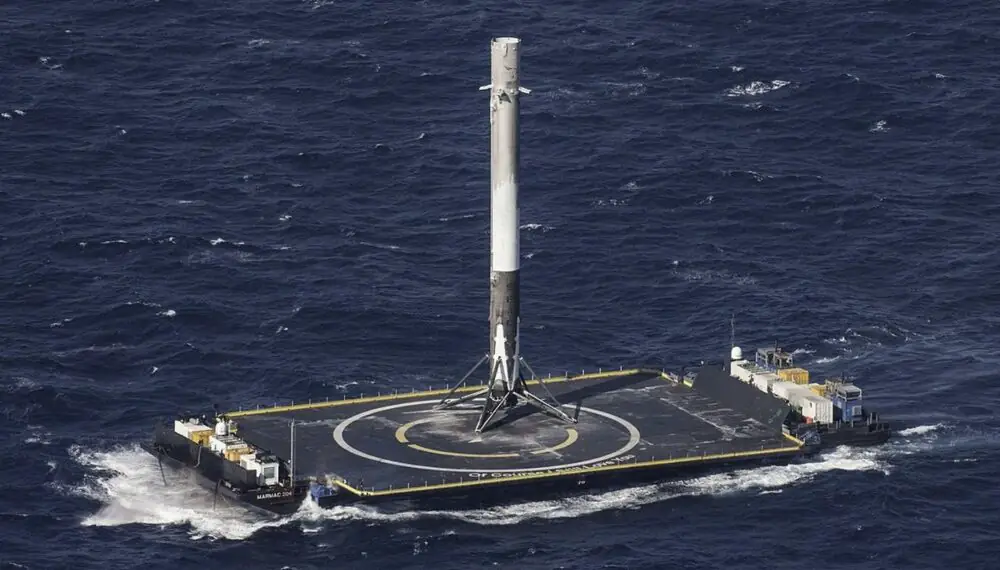
Crew Dragon didn’t just complete its mission – it did so with impact. The modern capsule features an interface that looks straight out of science fiction, combining elegant and functional design. Alongside a new generation of spacesuits developed specifically for SpaceX, the spacecraft symbolizes a significant technological leap. This flight was more than just a mission; it demonstrated SpaceX’s confidence, maturity, and readiness to transport people to space on a regular basis.
The mission’s success drew global attention. It marked a turning point where Elon Musk’s vision of Mars colonization shifted from distant fantasy to a tangible goal being actively pursued. By May 2025, SpaceX had conducted 15 commercial crewed launches, 10 of which were funded by NASA.
The path to space has not been without setbacks. In June 2015, SpaceX faced its first major technical failure. The Falcon 9 rocket, carrying out the CRS-7 mission to deliver cargo to the International Space Station, exploded just two minutes after launch. The cause was a surprisingly small component – a steel bracket.
This bracket held a helium tank under pressure inside the fuel tank. During ascent, when the rocket experienced significant acceleration, the bracket failed under the load. Helium was released at high pressure into the fuel tank, triggering a catastrophic explosion. Along with the rocket, the payload – a satellite valued at over $200 million – was lost.

It was a tough setback – not only because of the material losses but also because it came amid a series of previous successes. However, resilience is often tested in moments like these, and SpaceX demonstrated exactly that. Instead of retreating or calling for a “technical pause,” the company openly analyzed the failure, publicly acknowledged the mistake, and immediately got to work.
Within a few months, Falcon 9 was back in the air – strengthened, improved, and more confident. SpaceX seems to understand a key principle: success doesn’t come without failures, but what truly matters is how you respond to them.
Read also: Everything About the BLAZE Interceptor Drone from Latvian Company Origin Robotics
Super heavy launch vehicle Falcon Heavy
Falcon Heavy is a true heavyweight among rockets. This super heavy-lift launch vehicle from SpaceX, built by combining three Falcon 9 first stages, has been the most powerful rocket in operation since its debut in 2018. It can deliver over 63 tons of payload to low Earth orbit, exceeding the capacity of any other current rocket.
Essentially, Falcon Heavy is three Falcon 9 rockets joined into a single system. The central core is a reinforced first stage, flanked by two boosters, which are also modified Falcon 9 first stages. Above them sits the second stage, responsible for placing the payload into the target orbit – whether low Earth orbit, geostationary transfer orbit, or even an interplanetary trajectory.
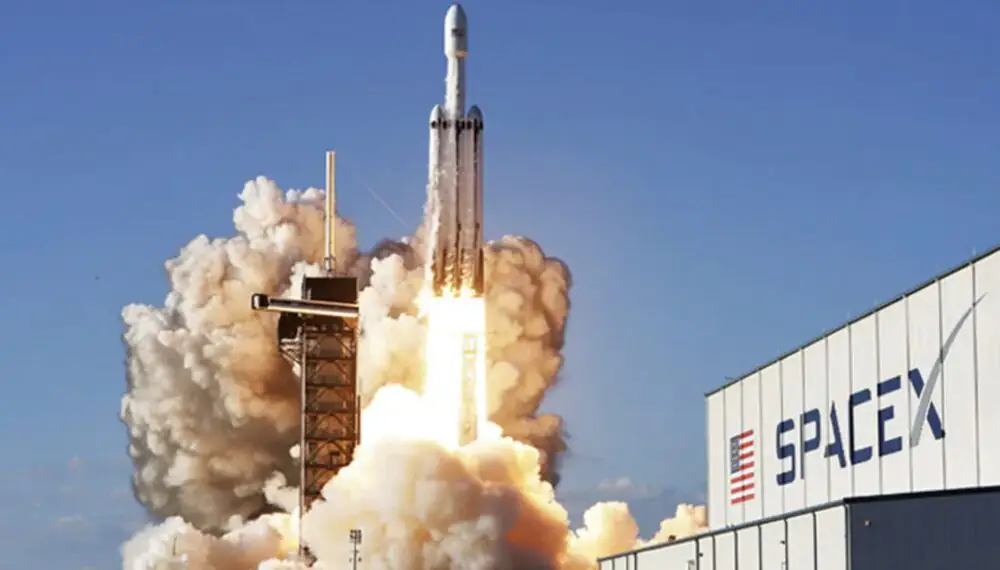
A key feature of Falcon Heavy is its reusability. The side boosters return to Earth, landing vertically in a manner reminiscent of science fiction films. This approach is not only visually impressive but also significantly reduces launch costs, which traditionally ran into hundreds of millions of dollars. For Falcon Heavy, launch prices start at $97 million – highly competitive for a rocket of this class.
The rocket’s first flight in February 2018 was a widely watched event. The demonstration payload was Elon Musk’s personal Tesla Roadster, now orbiting the sun on a trajectory near Mars. Inside the car sat a mannequin in a spacesuit, humorously named “Starman” by Musk.
As of February 2025, Falcon Heavy has completed 11 successful missions. These include both commercial and highly classified military launches, including missions for the U.S. Space Force. The rocket has demonstrated reliability, power, and operational flexibility.
Falcon Heavy serves as further evidence that SpaceX is not just catching up to competitors but setting new standards in the space industry. The most interesting developments are still ahead.
Read also: How the F-15 Eagle Fighter Plane Destroyed the Solwind P78-1 Satellite
Starship and its missions
Starship is more than just a rocket. It’s a next-generation space system designed to redefine interplanetary travel. Reusable, super heavy, and massive, it’s being developed by SpaceX as a central tool for exploring distant planets, including Elon Musk’s primary goal: Mars.
The system consists of two main components:
- Super Heavy: the first stage, a huge booster that lifts the spacecraft off Earth.
-
Starship: the second stage and a fully functional spacecraft capable of deep space flight and planetary landing.
Both stages are fully reusable, offering the potential to drastically reduce launch costs. While SpaceX has already demonstrated rocket recovery with Falcon 9, Starship represents an effort to scale that concept up to a massive size and an interplanetary level.
Super Heavy is powered by a new generation of Raptor engines that use methane and liquid oxygen. This fuel choice is deliberate, as methane could potentially be produced on Mars – a critical factor for long-term colonization missions. The Starship itself is also equipped with Raptor engines and features a large cargo bay capable of carrying up to 100 people along with substantial equipment and supplies.
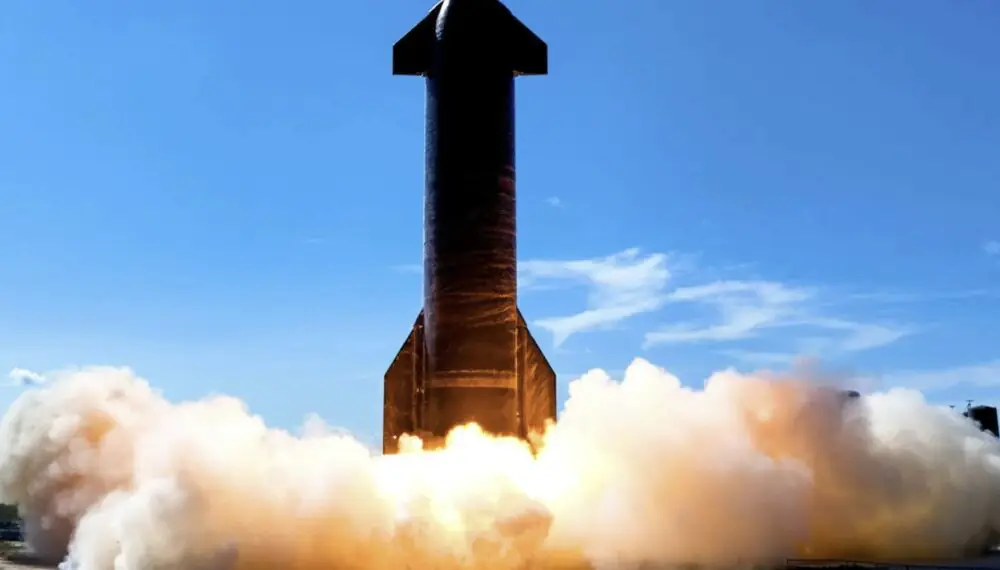
Currently, Starship is the most powerful spacecraft ever built. Its development costs have already exceeded \$5 billion, and the project remains in an active testing phase.
The first test flight took place on April 20, 2023. The spacecraft exploded four minutes after launch, but in typical Elon Musk fashion, the event was still described as a success: “We reached higher than ever before. Next time will be better.”
As of mid-2025, Starship has completed nine test flights. The most recent, the ninth flight on May 28, 2025, ended with the spacecraft breaking up during atmospheric re-entry. The flight began successfully: Starship lifted off, the stages separated, and the spacecraft reached a suborbital trajectory. However, during the return to Earth, Starship lost control of its orientation and re-entered the atmosphere at an incorrect angle, leading to its destruction.
The Super Heavy booster also failed to land successfully and was lost over the Gulf of Mexico.
Every launch represents progress. Musk and his team follow a simple principle: “launch fast, learn fast.”
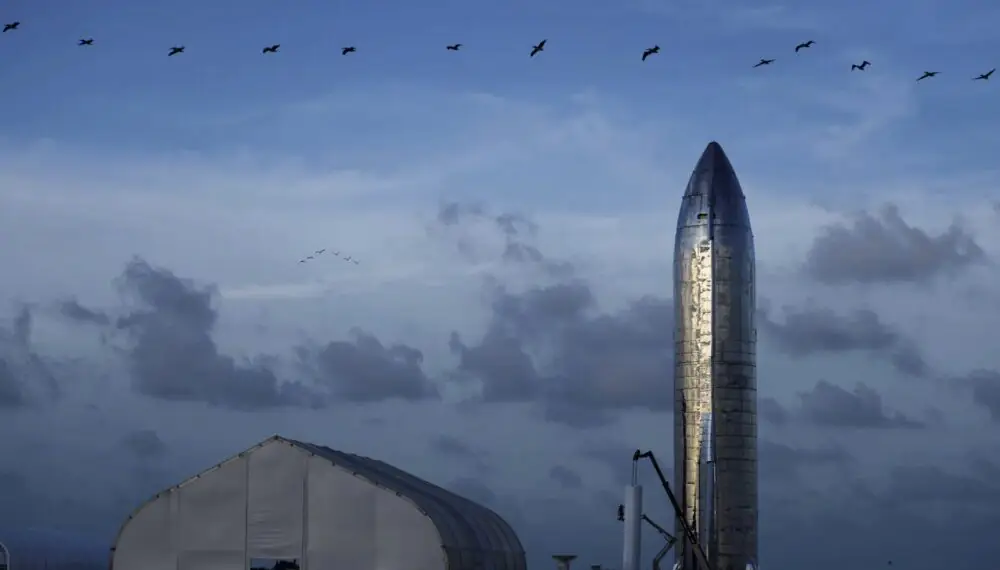
One of Starship’s groundbreaking features is orbital refueling. In the future, spacecraft will be able to rendezvous in space, transfer fuel, and continue their journey to the Moon, Mars, or beyond. This is no longer just a dream but a real scenario in development.
Starship is being designed not simply as a rocket but as a complete transportation system for an interplanetary civilization. It aims to carry people, cargo, and equipment to Mars – and back. This reflects Elon Musk’s core philosophy: for humanity to survive, it must become a multiplanetary species.
Starship was created with this goal in mind.
Read also: All About the NGAS Tanker Aircraft Project and Its Prospects
Global satellite internet (Starlink)
Another notable project from SpaceX is Starlink – a global satellite network designed to provide high-speed broadband internet access anywhere on Earth, especially in areas where traditional infrastructure is either technically difficult or economically impractical.
Unlike conventional providers that rely on towers and cables, Starlink operates through thousands of small satellites in low Earth orbit (LEO) working together to create worldwide coverage. This approach results in low latency and data speeds that are competitive with traditional fiber-optic networks.
A key advantage of Starlink is its use of laser communication links between satellites, allowing data to be transmitted directly from one satellite to another without routing through ground infrastructure. This capability is especially important for regions with limited access to undersea cables or terrestrial network hubs. At the same time, the satellites communicate with ground stations connected to the global internet backbone. Users access the system via specialized terminals, which have become a familiar sight on residential rooftops and even on moving vehicles.
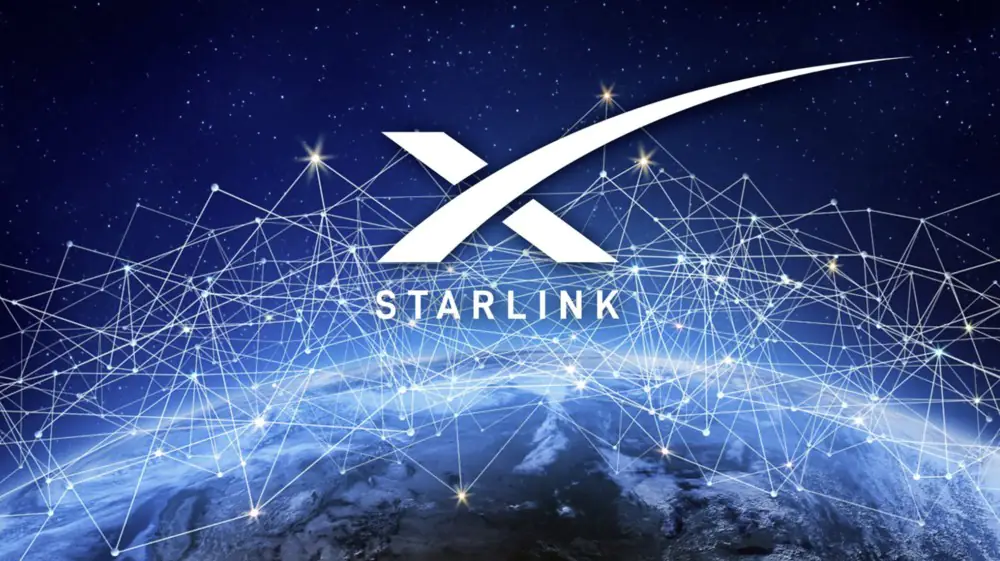
The first test launch took place in May 2019, deploying 16 prototype satellites. Since then, the system has rapidly expanded. According to Starlink’s official account on X (formerly Twitter), the user base surpassed 3 million by May 2024 and reached 4.6 million by January 2025.
Starlink’s official website features an interactive map showing which countries currently have coverage, where launches are planned soon, and where service is not yet available due to technical, political, or legal restrictions.
Starlink is more than just an internet service. It represents access to information, digital freedom, and a new form of global communication. It may also be the first step toward building a network that operates not only on Earth but eventually on the Moon, Mars, and beyond.
Read also: Everything Known About the Experimental UAV General Atomics A2LE
Plans for the future
SpaceX has ambitious plans for the future. While the full details remain largely speculative, the scope of their vision certainly deserves a separate discussion.
Colonisation of Mars
Elon Musk dreamed of Mars long before SpaceX was founded. With advances in technology, the development of Starship, and the reduction of spaceflight costs, that dream has gradually become a strategic direction for the company. The idea is both straightforward and ambitious: to build a permanent city on Mars, providing humanity with a chance to survive in the event of a global catastrophe on Earth.
Musk has repeatedly emphasized that interplanetary life is not a luxury or science fiction, but a form of insurance against human extinction. In 2016, he first presented the concept of a Martian colony, estimating the project’s cost at $10 billion. At the time, the ambitious target for the first crewed mission was 2024. As with many of Musk’s innovations, the timeline has shifted, but the overall goal remains unchanged.
At the 2023 International Astronautical Congress, Musk updated the timeline, projecting the first crewed expedition within the next three to four years, meaning by 2027. In May 2024, during a post on X (formerly Twitter), he stated that within 20 years there will be a city on Mars, and within 30 years, the first self-sustaining civilization.
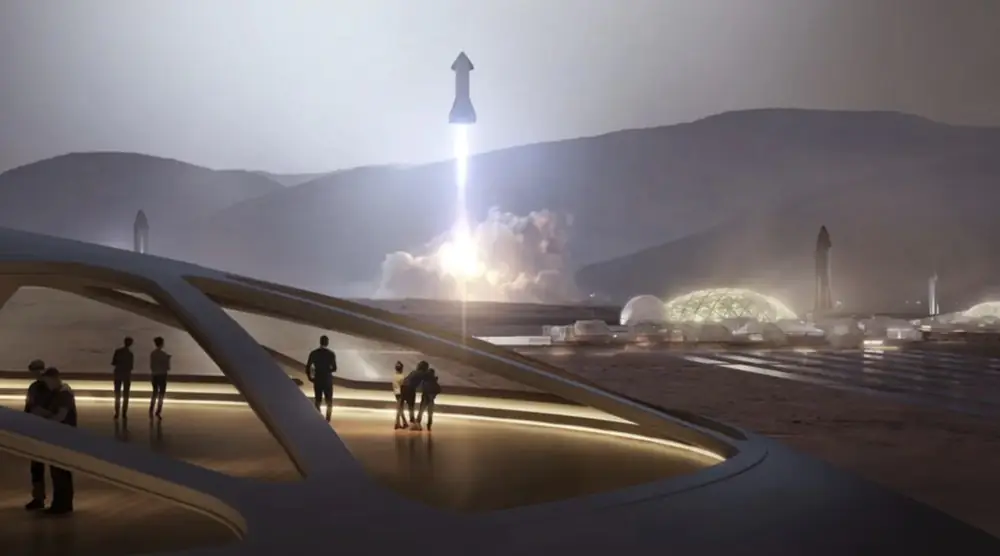
To achieve these goals, SpaceX is fully relying on the Starship rocket system, which is currently in an active testing phase. In September 2024, Musk announced a new phase: the company plans to send five uncrewed missions to Mars over the next two years. These missions will test landing capabilities, cargo systems, power generation, and the potential for establishing temporary bases.
Successfully completing these missions is critical for future crewed flights. If all goes according to plan, the first human crews could head to Mars as early as 2028. If challenges arise, the launch could be delayed by up to two years to ensure crew safety.
This is a long-term effort spanning decades. But this is exactly how Musk envisions the future: interplanetary, reusable, and with a sustained human presence beyond Earth. If anyone is likely to place the first dome on the Martian surface, it will most probably be SpaceX.
Read also: The Most Distant Spacecraft in the Solar System: Where Are They Now?
Space tourism
In May 2024, SpaceX took another significant step by offering space tourism packages on its official website. Now, anyone with sufficient financial means can book trips to the International Space Station, the Moon, or even Mars.
Commercial flights to the ISS are expected to become available as early as 2025, though ticket prices have not been disclosed. It’s clear, however, that these trips won’t be inexpensive, but they will mark a historic milestone.
The journey began earlier, in 2021, when SpaceX conducted the world’s first mission with a fully civilian crew during Inspiration4 in September. Without professional astronauts on board, just ordinary people with extraordinary courage, the mission represented a turning point in the development of commercial spaceflight.
On September 12, 2024, an even more ambitious milestone was reached with Polaris Dawn, a private mission during which two space tourists conducted a spacewalk. This marked the first-ever non-governmental human extravehicular activity, and it was completed successfully.
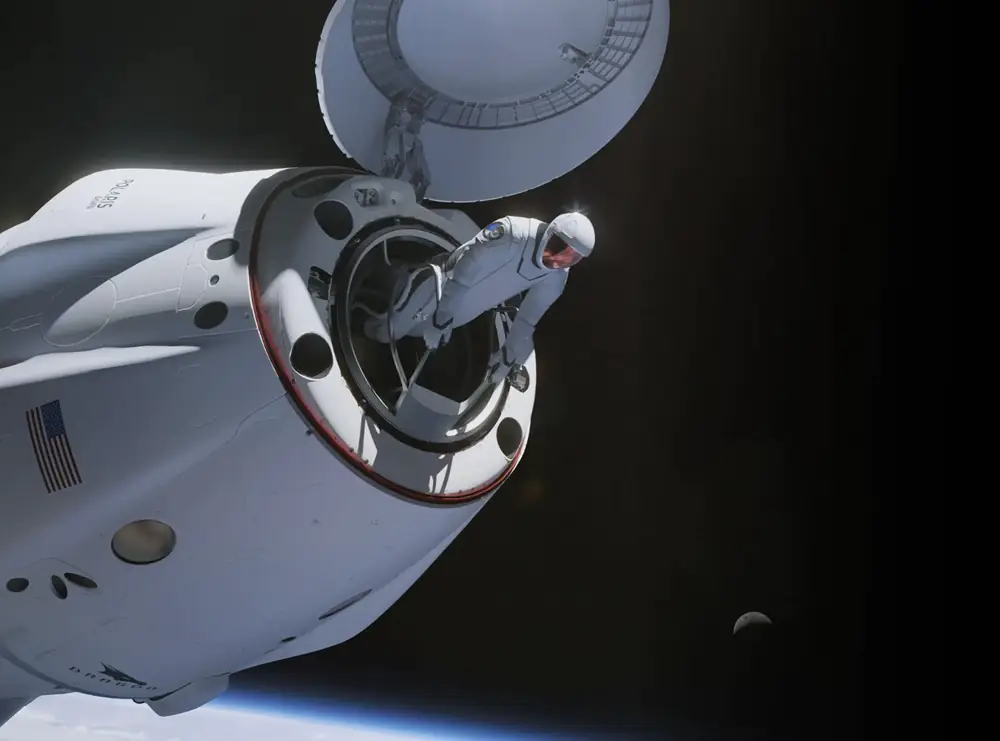
The crew spent five days in orbit before the Crew Dragon capsule successfully splashed down in the Gulf of Mexico.
The spacecraft reached an altitude of 1,400.7 km, breaking a record that had stood since 1966. Until then, no mission had operated at such a height without leaving Earth’s gravitational influence.
Space tourism is no longer science fiction but a reality. While currently accessible to only a few, SpaceX is demonstrating that this reality is steadily moving closer to the mass market. If orbital hotels, Moon excursions, or Earth-to-Mars flights become common in the future, it’s likely they will also carry the SpaceX logo.
Read also: “Invisible” Aircrafts: How Stealth Technology Works in Aviation
SpaceX’s impact on the space industry
Under Elon Musk’s leadership, SpaceX hasn’t just rewritten the rules of the space industry – it has changed the game itself. By 2024, the company is considered the most valuable private firm globally, with a market valuation of around \$350 billion. Its achievements are not only impressive but are defining a new era in space exploration.
In 2024 alone, SpaceX launched rockets roughly every two to three days, setting a pace unmatched by any national space program. Over the course of the year, the company conducted more missions than NASA did throughout the entire 30-year history of the Space Shuttle program. SpaceX has evolved beyond a private initiative – it is now a full-scale space launch operation.
SpaceX’s key technological breakthrough is reusable rockets. Where rockets were once considered single-use metal scrap after launch, SpaceX developed the ability to recover and reuse Falcon 9 boosters repeatedly. One booster has already completed 26 flights, and the company shows no signs of slowing down. This innovation achieved what was long considered impossible: a 96% reduction in launch costs, bringing the price down from $30,000 to about $1,200 per pound of payload.
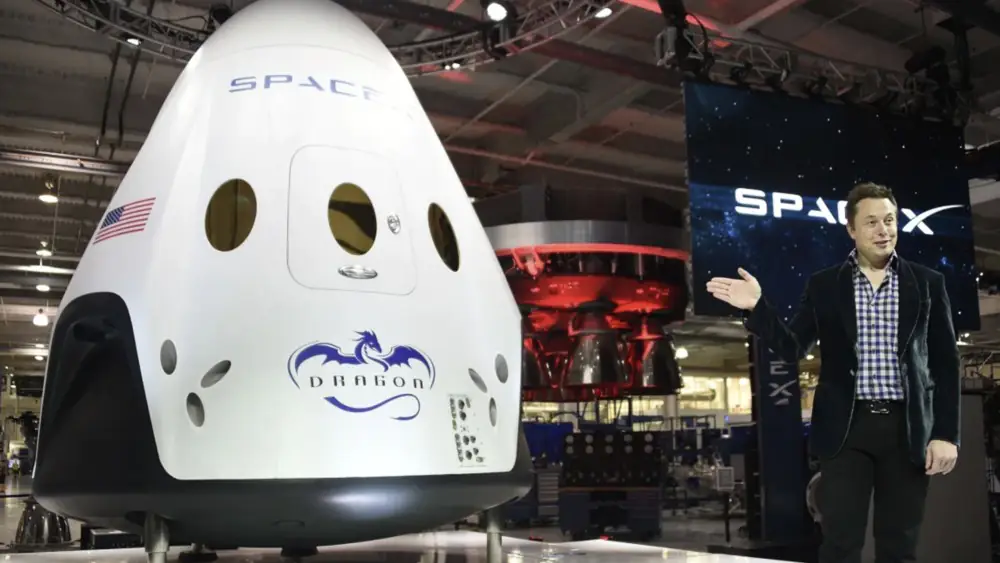
Another point of pride for the company is Starship, the most powerful rocket in human history. Standing 120 meters tall with 33 Raptor engines and fully reusable design, Starship is built for interplanetary travel and is already showing that a future with Mars is not just a fantasy but a practical plan.
Thanks to these breakthroughs, more objects have been launched into space in the past two years than in all of human history before. And this is just the beginning.
SpaceX has transformed commercial spaceflight from theory into a functioning industry. It has proven that private companies can effectively compete with government agencies – delivering cargo to orbit, launching satellites, and conducting crewed missions. SpaceX’s success has reshaped the market, attracting dozens of startups, billions in investment, and entire new ecosystems of space services.
Starlink represents a significant success for SpaceX. The high-speed satellite internet system now operates in over 70 countries. It supports streaming, online gaming, video calls, as well as connectivity for ships, aircraft, remote mountain villages, and desert regions. In 2024, Starlink generated $7.8 billion in revenue, providing a stable financial foundation for the company.
The story of SpaceX is a striking example of how one person’s ambitious vision can be realized through the collective efforts of thousands of engineers and developers. SpaceX’s future looks not only ambitious but is actively shaping a new reality in space. The company is moving beyond satellite launches and cargo deliveries to orbit; its long-term goal is to transform humanity into a multiplanetary species. This is no longer science fiction but a strategy gaining momentum every year.
Read also:


